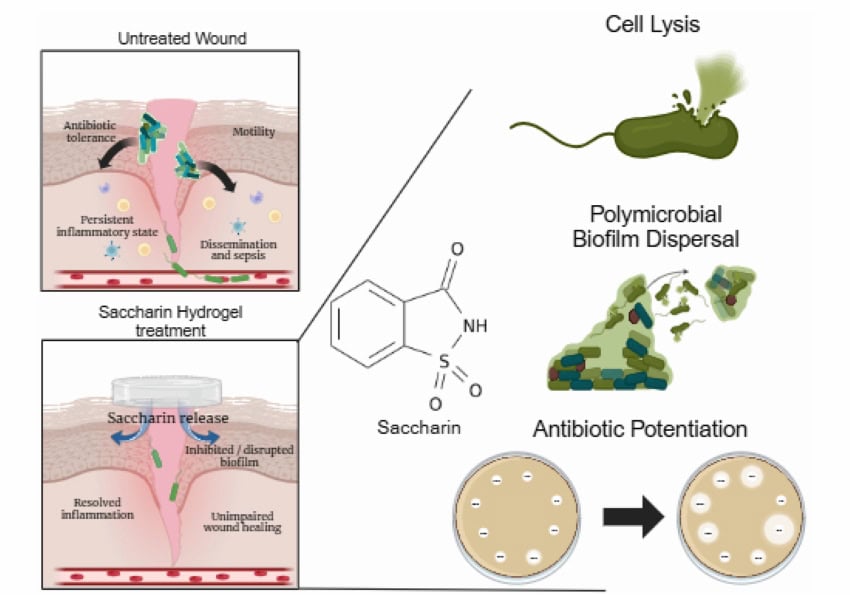
New Antiviral Chewing Gum Demonstrated to Prevent Up to 95% of Flu and Herpes Virus Spread

New Chewing Gum Could Significantly Minimize Transmission of Flu and Herpes
In an intriguing advancement that combines health technology and food science, scientists at the University of Pennsylvania’s School of Dental Medicine have created a chewing gum that may greatly reduce the likelihood of spreading two common viral infections: seasonal influenza and herpes simplex. This groundbreaking gum claims to neutralize as much as 95% of the viruses causing these illnesses—all without the requirement of injections or medication.
The Demand for Innovative Antiviral Measures
Seasonal influenza impacts approximately 1 billion individuals annually, as reported by the World Health Organization (WHO). Additionally, more than 64% of the global populace is infected with the herpes simplex virus (HSV)—which includes either HSV-1 (oral herpes) or HSV-2 (genital herpes). Both viruses are extremely contagious, frequently passed through saliva and close contact, with neither currently having a definitive cure. While antiviral treatments are available for herpes and flu vaccinations exist, both continue to be underutilized.
The new virus-absorbing gum presents a fresh, easy-to-implement approach to address virus dissemination at its source—oral contact—prior to the virus gaining deeper entry into the body.
A Convenient Snack with Significant Scientific Value
The gum, created under the guidance of Professor Henry Daniell and his group at Penn Dental Medicine, is derived from a natural legume called lablab beans (Lablab purpureus). These beans possess a naturally obtained protein known as FRIL (a lectin that captures viruses), which binds to sugar molecules found on the surface of viruses. This binding effectively “neutralizes” the virus, rendering it less transmissible.
Laboratory experiments demonstrated that a 2-gram piece of the gum, containing just 40 milligrams of the bean-sourced FRIL protein, could reduce:
– 95% of H1N1 and H3N2 (the two primary flu strains)
– 75% of HSV-1 (oral herpes)
– 94% of HSV-2 (genital herpes)
Moreover, the gum retained its effectiveness for an astounding 823 days when kept at room temperature, indicating that it could be easily distributed and stored globally—even in areas lacking refrigeration and stable infrastructures.
Testing with Innovative Mechanisms
Although not yet trialed in human subjects, the gum has been assessed using a mechanical device referred to as a “mechanical mouth,” which replicates the movements and conditions of chewing in humans. Tests showed that chewing the gum for as little as 15 minutes released over 50% of the active antiviral protein, a promising indicator that this product could be effective in practical use.
Crucially, the formulation has complied with U.S. Food and Drug Administration (FDA) safety standards, further fueling optimism that human clinical trials could begin soon.
A Wider Perspective: Beyond Human Health
“This innovation is timely for preventing infection and transmission,” states Daniell, highlighting that the use of this technology may extend beyond human application. The team is also looking into incorporating lablab beans in bird feed to help mitigate the spread of avian influenza—yet another global health challenge.
Given that influenza can pass among various species, including birds and pigs (where new, potentially risky strains might develop), this cross-species application could play a crucial role in efforts to halt the next pandemic before it arises.
The Prospects for Virus-Combatting Foods
The creation of this virus-neutralizing gum could symbolize part of a broader movement toward integrating antiviral substances into everyday products. Unlike medications that necessitate prescriptions, chewing gum infused with natural antiviral substances could become an integral component of public health initiatives—offering protection in educational institutions, workplaces, and public transport systems with ease.
Since both flu and herpes viruses are mainly spread via oral means, the implications of a simple saliva-neutralizing gum are substantial. It not only serves as a physical barrier during possible exposure but could also be utilized proactively during flu season, social events, or travel.
Next Steps
With the formulation showing promising preclinical results and passing safety requirements, the next phase for the research team is conducting human clinical trials. If the outcomes are consistent in humans as they have been in laboratory simulations, we may stand on the cusp of a transformation in how we prevent and address viral infections—initiating with something as accessible as chewing gum.
With continued research and further funding, chewing gum could soon join face masks, hand sanitizers, and vaccines as one of the diverse tools available to aid in maintaining our health—one piece at a time.
Sources:
– World Health Organization: Seasonal Influenza and Herpes Simplex Virus Fact Sheets
– Molecular Therapy Journal: Antiviral Chewing Gum Research
– Penn Today: University of Pennsylvania Research Highlights
– CDC: Avian Influenza Updates
Related Innovations:
– Woman Who Can Smell Parkinson’s Disease Helps Drive Research Forward
– Prescribing Museum Visits for Mental Health Sees Positive Global Impact
– Ultrasound Therapy Cures Essential Hand Tremors in Breakthrough